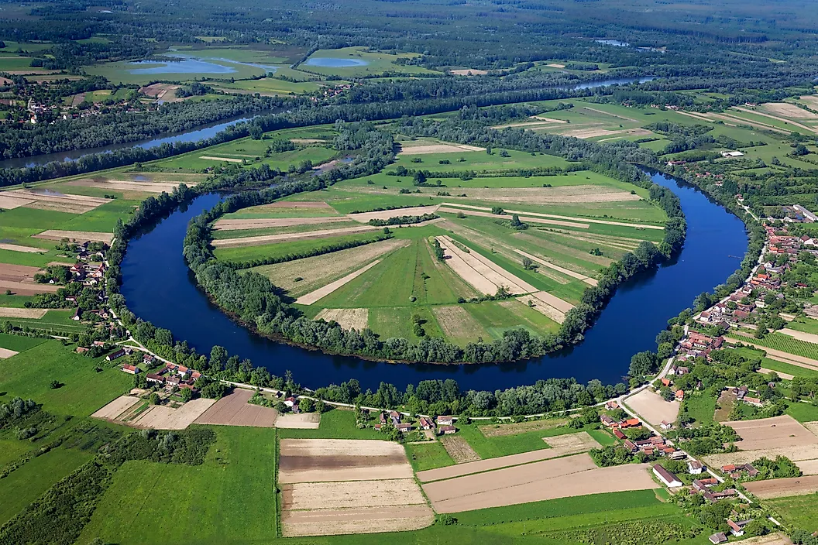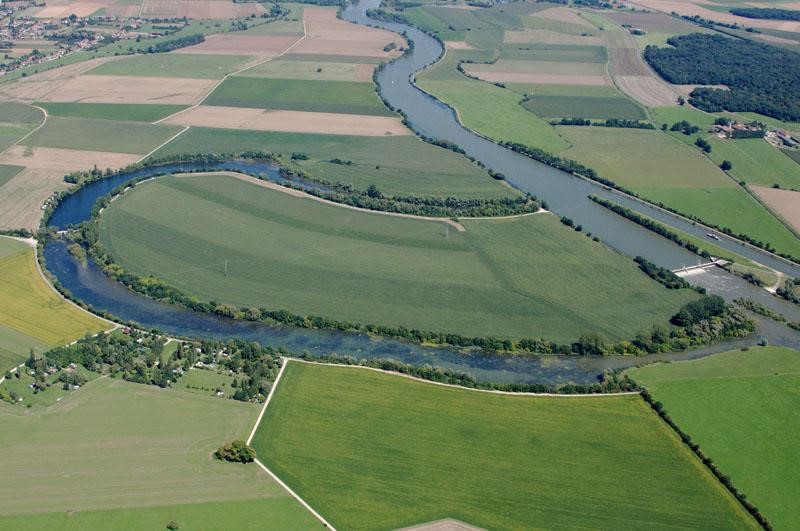- Ancient meander reconnection
- Reconnections to hydraulic annexes
An oxbow lake is an ancient meander that was cut off from the river, thus creating a small lake with a U form. Reconnecting it with the river consists in removing terrestrial lands between both water bodies, therefore favouring the overall functioning of the river by restoring lateral connectivity, diversifying flows and cleaning the river section of the present oxbow for a better water retention during floods.
Recent literature highlights the ecological and hydrological significance of oxbow lakes, emphasising their preservation and reconnection to parent rivers rather than their removal. Their reconnection to river systems facilitates natural flow dynamics, improves water retention, and helps mitigate the impacts of hydrological fragmentation. Moreover, studies indicate that connected oxbow lakes act as natural buffers, improving water quality by retaining sediments and pollutants while also promoting floodplain biodiversity.

Illustration X: Oxbow lake (CRO)
Source: World Atlas

Illustration X: re-connected Oxbow wetland, (UK)